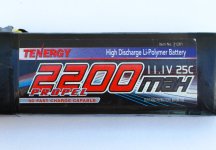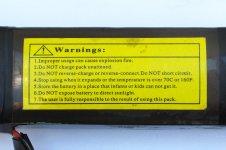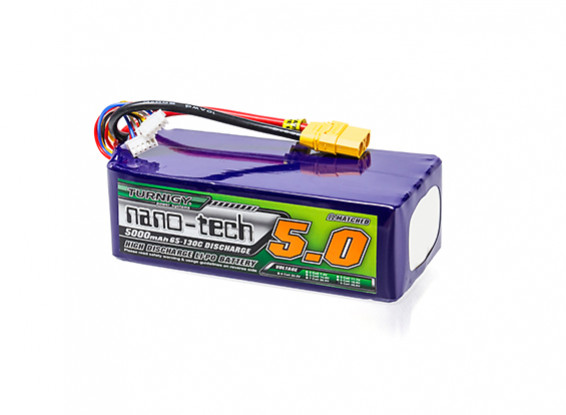ebike11 said:
Controller power isnt a problem...the Fardriver I have can push out 800amps easily but of course I limited the power in the settings and will gradually increase depending on what I can get from the battery pack
We need to correct some confusion that still exists. So here goes ...
20Ah x 12C = 240Ah ... not 240 energy amps (theoretically) being delivered to the motor via the Controller. It doesn't work multiplying 20Ah times the energy A drain rate (12C) to arrive at a 240A Controller. To arrive at a Contollers' amp rating you would multiply the cells' energy density A rating times the rate of current drain.
A cells' energy dense A rating (e.g. 20A) is NOT the same as 20Ah. You can't take 20Ah times a cells' energy dense allowable A drain rate (e.g. 12C) to arrive at the Controllers' amp rating (e.g. 240amps, 480amps or 800amps).
So 12C can have different meaning/application which can be confusing ... as has happened in this thread. In other words there's a difference between Ah capacity of a cell and the cells' A energy rating. An RC lipo pack can have an inflated Ah capacity rating as high as 20Ah while the cells A energy rating may be as low as 3-5amp. Thus Turnigy can claim a continuous discharge rate of 12C (5A x 12C = 60amps, but only for a few minutes (3-10) depending on discharge rate.
You are confusing Ah capacity rating with the A energy drain rating of each cell in that 6s1p Turnigy battery. Turnigy doesn't provide a datasheet of the cells' energy dense amp rating in their 6s1p 20Ah 12C pack (for good reason). Here's my best guess as to why figures don't lie, but why RC Lipo manufactures will lie and won't divulge a cells' true A rate for achieving best cycle life longevity ...
Lets say Turnigy rates that 6s1p pack at a cell energy amp rating of 5amps (not 20amps). 5A x 12C = 60amps continuous discharge available for say 3 minutes before the pack exceeds a dangerous temperature (+100 degrees F). Doubt Turnigy will divulge the cell energy amp rating they use to arrive at 12C. It's probably not more than 5A, if that much. The other thing they will never divulge is the average number of discharge cycles
possible at continuous discharge for say 3 minutes. They would be quick to say, "There are too many variables" and they would be correct in large measure to their own inflated values.
IMO, a RC Lipo mnufacturer that has a 20C discharge rate for a 10sec 20C burst rating is
inflated ... unless the only benchmark concern is the
critical temperature so as not to expand the cell, while the packs' short cycle life is of no concern to Turnigy.
ebike11 said:
Oh i have 4 of these and also another 4S pack of the same cells 28S in total...fully charged is around 117V.
One of those Turnigy's can cost $200. You have two 28s1p Turnigy packs you plan to parallel. All told that includes 8-6s1p and 2-4s1p or $1,600 just for 8 of those RC Turnigy 20Ah 12C 6s1p Lipos ...
https://hobbyking.com/en_us/turnigy-high-capacity-battery-20000mah-6s-12c-drone-lipo-pack-xt90.html
You should've used the money you spent on those 8-RC Lipo 20Ah 12C 6s1p Turnigy and 2-RC Lipo 4s1p Turnigy to purchase the best ebike Battery available for less money and longer cycle as well as ebike riding enjoyment. Plus far less concern for your 28s2p (paralleled) DIY RC Turnigy battery pack possibly going up in flames using a 480A Controller (according to your figuring).
Unfortunately the RC herd mentality is apparently such that WHY use an ebike battery to power their ebike when a 28s
2p DIY RC Turnigy
40Ah 20C DIY Lipo battery pack provides 800amps of power (at least for a few seconds at 20C) according to OP's misguided figuring; which he may still believe is correct thinking. Even the other poster was misled if he actually thought 20Ah x 12C = [theoretically] up to 240amps available for a 240A Controller.
BOTTOMLINE: The use of RC Lipos rated from 12C-24C were never intended to use for powering an ebike motor. In fact no RC Lipos no matter how impressive the specs are applicable for an ebike powerplant. The use of RC Lipos is only applicable for a
few minutes of RC Hobby Toy use. The less discharge rate (e.g. 5C instead of 12C)and less continuous discharge the longer battery time, longer cycle life and less chance of cell swelling.
The OPs, example of 240amps, 480amps or even a 10sec burst at 800 amps (40Ah x 20C) using both of his 28s1p packs paralleled goes to show how RC Lipo manufacturers can so easily fool users by telling them what they want to hear/believe instead of what they would be far better off knowing before they spend $200 on a 20Ah 12C 6s1p RC Lipo.
Read unfavorable review of the OP's Turnigy 6s1p 20Ah 12C ...
https://www.amazon.com/Turnigy-High-Capacity-20000mAh-Multi-Rotor/product-reviews/B07DRDG7V8?reviewerType=all_reviews






